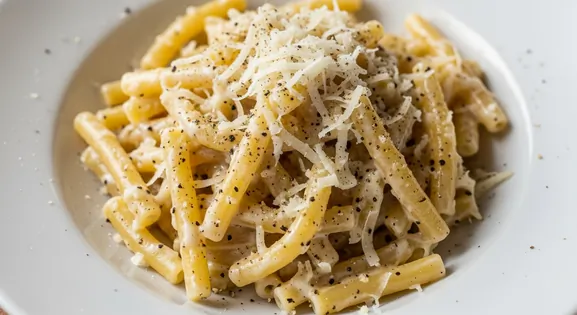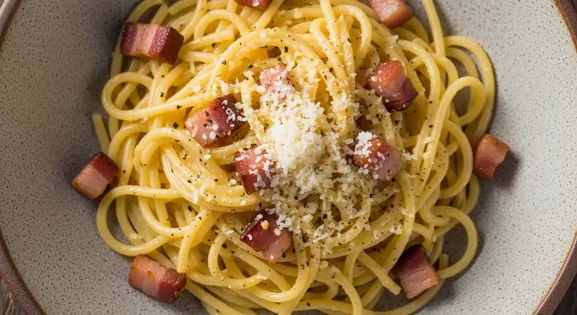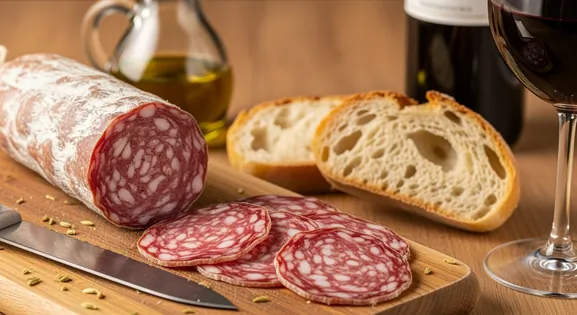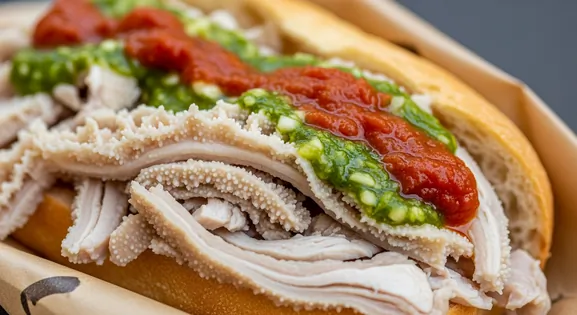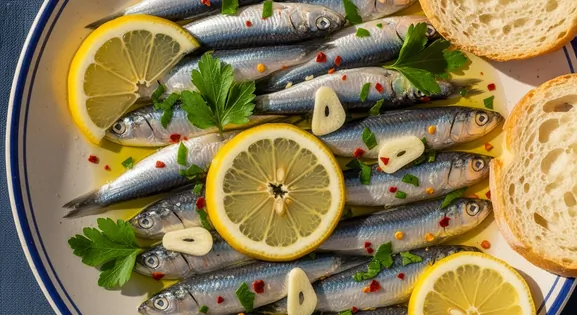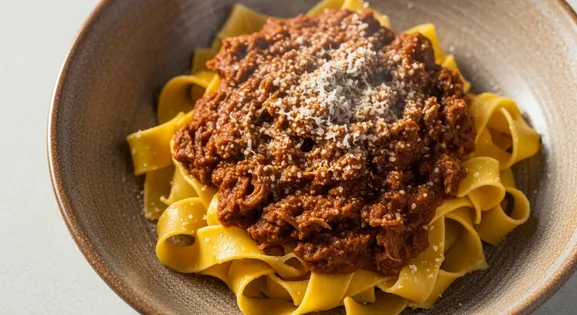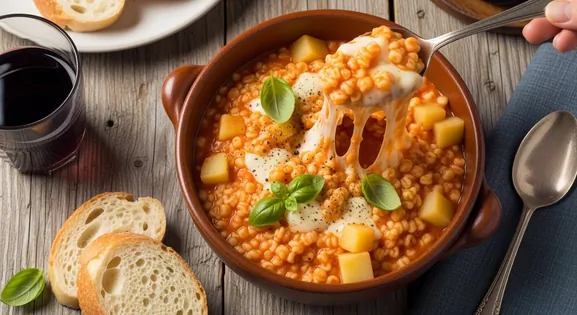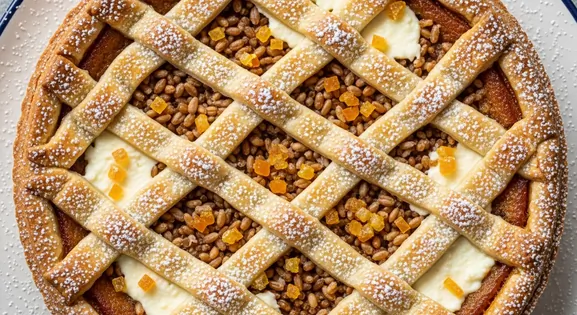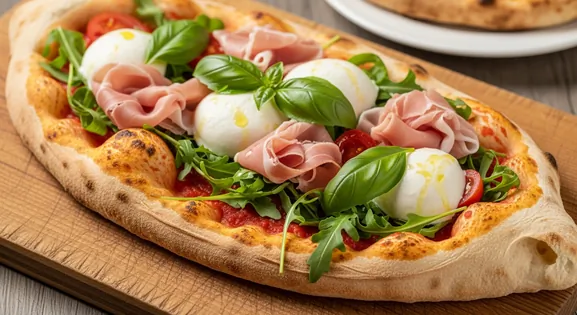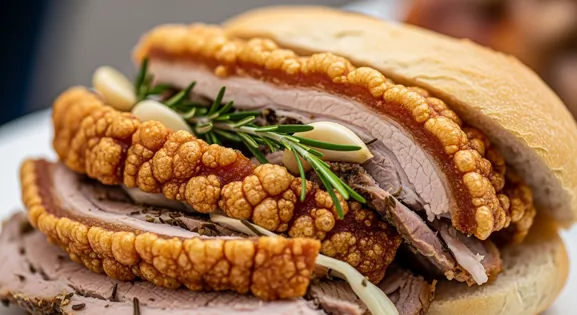Pizza Margherita in Italy: A Complete Food Lover's Guide
Pizza Margherita
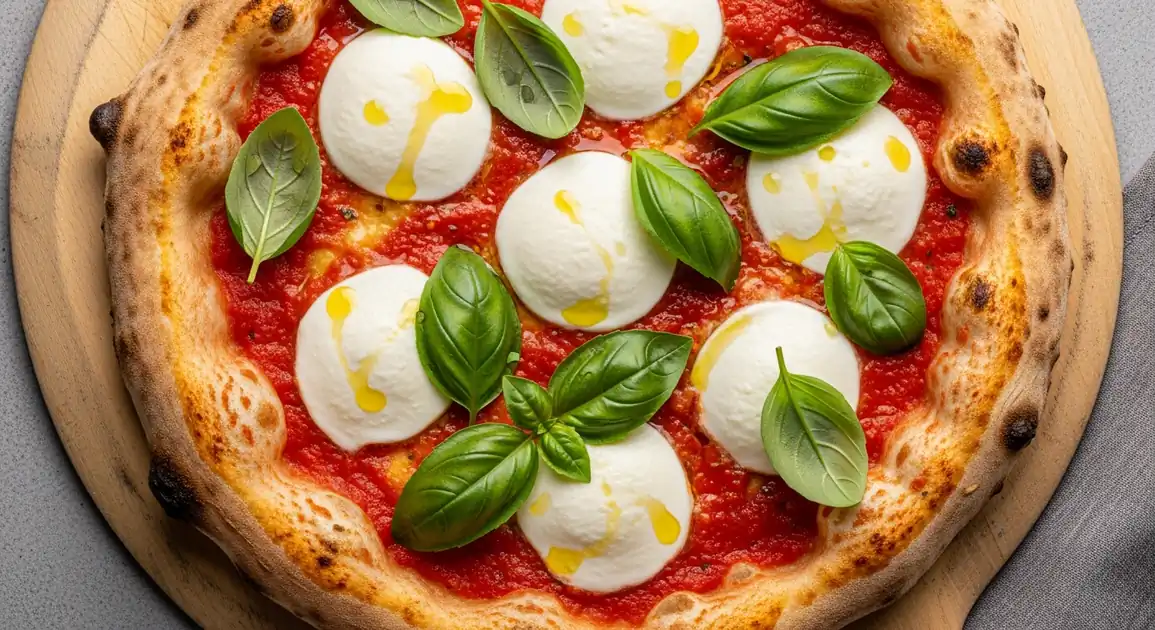
Understanding This Dish: An Introduction
Pizza Margherita is the quintessential Neapolitan pizza, characterized by its simple yet exquisite combination of a thin, soft crust topped with San Marzano tomatoes, fresh fior di latte mozzarella, fragrant basil leaves, extra virgin olive oil, and a light sprinkle of salt. The pizza is traditionally cooked for just 60-90 seconds in a blazing hot wood-fired oven, creating its distinctive soft center and charred, puffy rim (cornicione).
The Art of Preparation
Authentic Pizza Margherita begins with a dough of '00' flour, water, salt, and a minimal amount of yeast, allowed to ferment slowly (typically 8-24 hours). The dough is hand-stretched (never rolled) to about 3mm thickness with a slightly thicker rim. It's then topped with crushed San Marzano tomatoes (simply seasoned with salt), pieces of fresh fior di latte mozzarella, a drizzle of extra virgin olive oil, and fresh basil leaves. The pizza is baked for just 60-90 seconds in a wood-fired dome oven at extremely high temperatures (430-480°C/800-900°F), allowing the crust to rise and char while the center remains soft and the toppings cook perfectly.
Key Ingredients of Pizza Margherita
San Marzano Tomatoes
These D.O.P. (Protected Designation of Origin) tomatoes are grown in the volcanic soil near Mount Vesuvius. They are crushed, not cooked, for the sauce, providing a naturally sweet and slightly acidic base.
Quality indicator: Look for whole, peeled San Marzano tomatoes from Italy, ideally D.O.P. certified, with a vibrant red color and firm texture.
Fior di Latte Mozzarella
This fresh cow's milk mozzarella is crucial for its creamy texture and mild flavor. It melts beautifully without releasing too much water, ensuring the pizza isn't soggy.
Quality indicator: Authentic fior di latte should be soft, moist, and have a delicate milky aroma. It should be torn or cut into pieces, not shredded.
'00' Flour Dough
The foundation of the pizza, made with finely milled '00' flour, water, salt, and yeast. It's kneaded and fermented to create a light, airy, and elastic crust with a distinctive chew.
Quality indicator: The dough should be hand-stretched thin in the center with a puffy, airy rim (cornicione). It should feel soft and pliable, not dense or stiff.
The Perfect Accompaniments
Local Italian Beer
Beverage
A crisp, light Italian lager or pilsner, such as Peroni Nastro Azzurro or Moretti, provides a refreshing contrast to the rich flavors of the pizza. Its effervescence cleanses the palate between bites.
Still or Sparkling Water
Beverage
Simple still or sparkling mineral water is a classic and refreshing choice that allows the pure flavors of the Pizza Margherita to shine without interference. It's a common accompaniment in Italian pizzerias.
The Culinary Legend of Pizza Margherita
While flatbreads with toppings have existed for centuries, Pizza Margherita as we know it was reportedly created in 1889 by pizzaiolo Raffaele Esposito of Pizzeria Brandi in Naples. According to popular tradition, he prepared three different pizzas for Queen Margherita of Savoy during her visit to the city. The queen preferred the version with tomatoes, mozzarella, and basil, which coincidentally displayed the colors of the Italian flag. Esposito named this creation 'Pizza Margherita' in her honor. By 2009, the European Union granted Traditional Specialty Guaranteed status to Pizza Napoletana, protecting its authentic preparation methods.
Local Pizza Margherita Variations in Italy
Pizza Napoletana Margherita Extra
A premium version made with buffalo mozzarella (mozzarella di bufala) instead of fior di latte. It has a more rich, tangy flavor.
Pizza Margherita with Double Mozzarella
Contains twice the standard amount of cheese for those who prefer a more indulgent pizza.
Pizza Margherita D.O.P.
Made exclusively with certified D.O.P. (Protected Designation of Origin) ingredients, including San Marzano tomatoes from the volcanic plains south of Mount Vesuvius and Mozzarella di Bufala Campana.
Pizza Margherita with Cornicione Stuffed with Ricotta
Modern variation where the crust rim is stuffed with ricotta cheese, sometimes mixed with pepper or other seasonings.
Pizza Margherita a Portafoglio
A smaller version that's folded in half (like a wallet) for street consumption, typically sold by vendors for eating on the go.
A Traveler's Guide to Authenticity
What to Look For
-
Wood-fired oven with visible flames
Traditional wood-fired ovens reach temperatures of 430-480°C (800-900°F), which ensure thorough cooking and optimal texture. The flame should be visible.
-
Fresh mozzarella being cut for each pizza
High-quality pizzerias use fresh mozzarella (fior di latte) that's cut or torn shortly before use, not pre-shredded or pre-sliced that's been sitting out.
-
Busy pizzeria with high turnover
Ingredients won't sit out long, and everything from dough to toppings will be fresher. High customer volume often indicates a well-regarded establishment.
-
Clean workspace visible to customers
Many traditional pizzerias have open kitchens. Look for clean counters, organized ingredient stations, and proper handling procedures.
-
Properly risen and cooked dough
The pizza should have air bubbles in the crust and show proper cooking with some charring. Undercooked, dense dough indicates poor preparation and can affect enjoyment.
What to avoid
-
Pre-made or reheated pizzas
Authentic Pizza Margherita should be made to order and served immediately. Avoid places that seem to reheat or pre-prepare components.
-
Excessively thick or uniformly flat crust
This indicates either improper dough preparation or the use of a rolling pin (not traditional), affecting both authenticity and quality.
-
Shredded or processed mozzarella
Traditional Pizza Margherita uses fresh mozzarella torn into pieces, not pre-shredded cheese, which often contains anti-caking additives.
-
Tomato paste instead of fresh tomato sauce
Proper Margherita uses crushed San Marzano tomatoes, not thick paste. The sauce should be bright red and relatively light.
-
Dried basil instead of fresh leaves
Traditional Pizza Margherita should have fresh basil leaves, which are more flavorful and visually appealing than dried herbs.
Explore Pizza Margherita in Detail: City Guides
Discover where to find the best Pizza Margherita and learn local tips in these cities:
Dietary Information
Dietary Information
Important Note for Travelers: Your safety is our priority. Below are the common allergens associated with the traditional preparation of this dish. However, recipes and ingredients can vary significantly between establishments. Always confirm all ingredients directly with the food vendor before ordering, especially if you have a severe allergy.
Potential Allergens
Dietary Suitability
How to Order Pizza Margherita
Frequently Asked Questions about Pizza Margherita
What is authentic Pizza Margherita?
Authentic Pizza Margherita is a traditional Neapolitan pizza. It features hand-stretched dough, San Marzano tomatoes, fresh fior di latte mozzarella, basil, and olive oil. Baked briefly in a wood-fired oven at extreme temperatures (430-480°C/800-900°F), it results in a soft, elastic center with a puffy, charred crust. Its colors (red, white, green) reflect the Italian flag.
Why is it called Pizza Margherita?
The pizza was reportedly named after Queen Margherita of Savoy in 1889. During her visit to Naples, pizzaiolo Raffaele Esposito created a pizza with tomatoes, mozzarella, and basil, mirroring the Italian flag's colors. The Queen preferred this version, and Esposito named it in her honor. This story, though debated, is widely accepted.
Is Pizza Margherita a quality choice in Italy?
Yes, Pizza Margherita is generally a high-quality choice, especially from established pizzerias. High cooking temperatures ensure thorough preparation. Quality establishments use fresh ingredients daily. Look for busy pizzerias with high turnover and 'Vera Pizza Napoletana' certification for optimal enjoyment and quality assurance. Ensure the pizza is properly cooked with no raw dough.
What makes a good Pizza Margherita?
A good Pizza Margherita has a properly fermented, light dough with a raised, charred crust. It uses high-quality, minimally processed San Marzano tomatoes and fresh, melted fior di latte mozzarella. Fresh basil leaves, good extra virgin olive oil, and balanced proportions are key. Evidence of high-temperature cooking, like leopard spotting on the crust, indicates quality. The center should be soft and pliable.
Is Pizza Margherita vegetarian?
Yes, traditional Pizza Margherita is vegetarian, containing dough, tomatoes, mozzarella, basil, and olive oil. However, strict vegetarians should note some mozzarella may use animal rennet. For vegans, Pizza Marinara (no cheese) is an option, or request Margherita without cheese ('senza formaggio') and confirm the dough is lard-free, which is rare.
How much does a Pizza Margherita typically cost in Italy?
In Italy, a traditional Pizza Margherita usually costs €4-7 at local pizzerias. Premium or historic places might charge €7-10. Tourist-heavy areas can see prices of €8-12. Street vendors sell 'pizza a portafoglio' for about €1.50-3. Remember, many pizzerias also add a small 'coperto' (cover charge) of €1-2 per person.
Expert How-To Guides about Pizza Margherita
How to Spot an Authentic Neapolitan Pizzeria
Learn how to identify truly authentic Neapolitan pizzerias to ensure you experience the best Pizza Margherita Italy has to offer.
- Look for the 'Associazione Verace Pizza Napoletana' certification logo, which guarantees adherence to traditional methods.
- Check for a wood-fired oven ('forno a legna') - it should be visible and actively in use.
- Observe the pizzaiolo (pizza maker) hand-stretching dough rather than using a rolling pin or machine.
- The menu should be relatively simple, focusing on traditional varieties rather than numerous exotic options.
- Notice the clientele - locals dining there is a good sign.
- Real Neapolitan pizza has a soft center that's typically eaten with knife and fork, not picked up New York-style.
How to Order Pizza Margherita Like a Local
Master the art of ordering and enjoying Pizza Margherita in Italy, ensuring a smooth and authentic dining experience.
- In busy pizzerias, you may need to wait in line before being seated.
- Don't expect extensive modifications - traditional places pride themselves on their standard recipes.
- It's common to order one pizza per person, not for sharing.
- Specify 'ben cotta' if you prefer a more well-done crust than the traditional soft Neapolitan style.
- Drink recommendations: local beer, wine, or mineral water - rarely soft drinks with pizza.
- Tipping is not expected but rounding up the bill or leaving a small amount is appreciated.
How to Evaluate Pizza Margherita Quality
Learn what to look for to judge the authenticity and quality of your pizza.
- Check the crust: It should have a raised rim ('cornicione') with leopard-like char spots from the wood-fired oven.
- Center thickness: Authentic Neapolitan pizza has a thin center that's soft, not crispy.
- Ingredients should be minimal but high quality - visible chunks of fresh mozzarella, not a blanket of cheese.
- Tomato sauce should be simple and bright red, not overly herbed or dark.
- Fresh basil leaves should be present and vibrant green, not dried herbs.
- The pizza should arrive quickly after ordering (60-90 seconds cooking time) and be served immediately.
Our Commitment to Quality
At Tasteplorers, our mission is to provide the most accurate and useful travel information in the world. To achieve this, all content on this site is created through our unique editorial framework. We utilize leading AI research tools, guided by our proprietary prompts, and a multi-stage validation process. This entire system is overseen by our editorial team to ensure everything we publish meets our high standards for accuracy, cultural nuance, and practical value for travelers.
Learn more about our Editorial Process and our Mission.
Countries
Explore regions
Europe
Discover Europe's diverse culinary landscape, from Mediterranean flavors to hearty Alpine fare. Learn to navigate markets, decode menus, and eat like a local.
Latin America & Caribbean
Discover the vibrant cuisines of Latin America & the Caribbean. Our expert guide covers everything from Mexican street food to Peruvian ceviche and market tips.
Oceania
Explore Oceania's diverse food scene. Learn about Polynesian earth ovens, Fijian feasts, and the vibrant café culture of Australia and New Zealand.
Southeast Asia
Explore Southeast Asia's diverse food cultures from Thailand to Vietnam. Get expert tips on navigating spice levels, choosing quality vendors, and understanding the rich traditions of the region.
